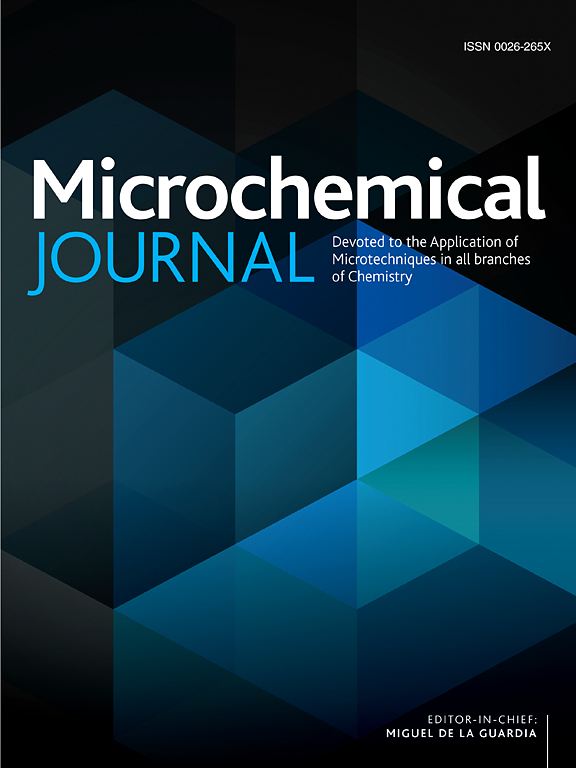Facile synthesis of thiocyano-functionalized dendritic mesoporous silica spheres for efficient extraction of eugenol anesthetics from aquatic products
IF 4.9
2区 化学
Q1 CHEMISTRY, ANALYTICAL
引用次数: 0
Abstract
In this work, thiocyano-functionalized monodisperse dendritic mesoporous silica microspheres (DMS-SCN) were successfully synthesized and utilized as efficient solid-phase extraction adsorbents for the enrichment of eugenol anesthetics in aquatic products. The thiocyano functionalization significantly improves the adsorption capacity of the adsorbent for the four eugenol anesthetics from 723–1092 μg g−1 to 2180–3885 μg g−1 in virtue of the reinforced permanent dipole interactions, π-π stacking interactions, and electrostatic interactions. By coupling DMS-SCN based solid phase extraction with HPLC (SPE-HPLC) method, an analytical method for determination of eugenol anesthetics in tilapia, carp and shrimp was successfully developed. This method achieves low detection limits ranging from 0.32 ng mL−1 to 0.82 ng mL−1 and exhibits a wide linear range from 1 ng mL−1 to 200ng mL−1. The recoveries for the four eugenol anesthetics range from 85.16 % to 109.1 %, with relative standard deviations between 1.18 % and 8.37 %. The method demonstrates minimal matrix effects and high accuracy. The DMS-SCN based SPE-HPLC method is anticipated to be a valuable tool for the analysis of eugenol anesthetics in complex sample matrices.

求助全文
约1分钟内获得全文
求助全文
来源期刊

Microchemical Journal
化学-分析化学
CiteScore
8.70
自引率
8.30%
发文量
1131
审稿时长
1.9 months
期刊介绍:
The Microchemical Journal is a peer reviewed journal devoted to all aspects and phases of analytical chemistry and chemical analysis. The Microchemical Journal publishes articles which are at the forefront of modern analytical chemistry and cover innovations in the techniques to the finest possible limits. This includes fundamental aspects, instrumentation, new developments, innovative and novel methods and applications including environmental and clinical field.
Traditional classical analytical methods such as spectrophotometry and titrimetry as well as established instrumentation methods such as flame and graphite furnace atomic absorption spectrometry, gas chromatography, and modified glassy or carbon electrode electrochemical methods will be considered, provided they show significant improvements and novelty compared to the established methods.
 求助内容:
求助内容: 应助结果提醒方式:
应助结果提醒方式:


